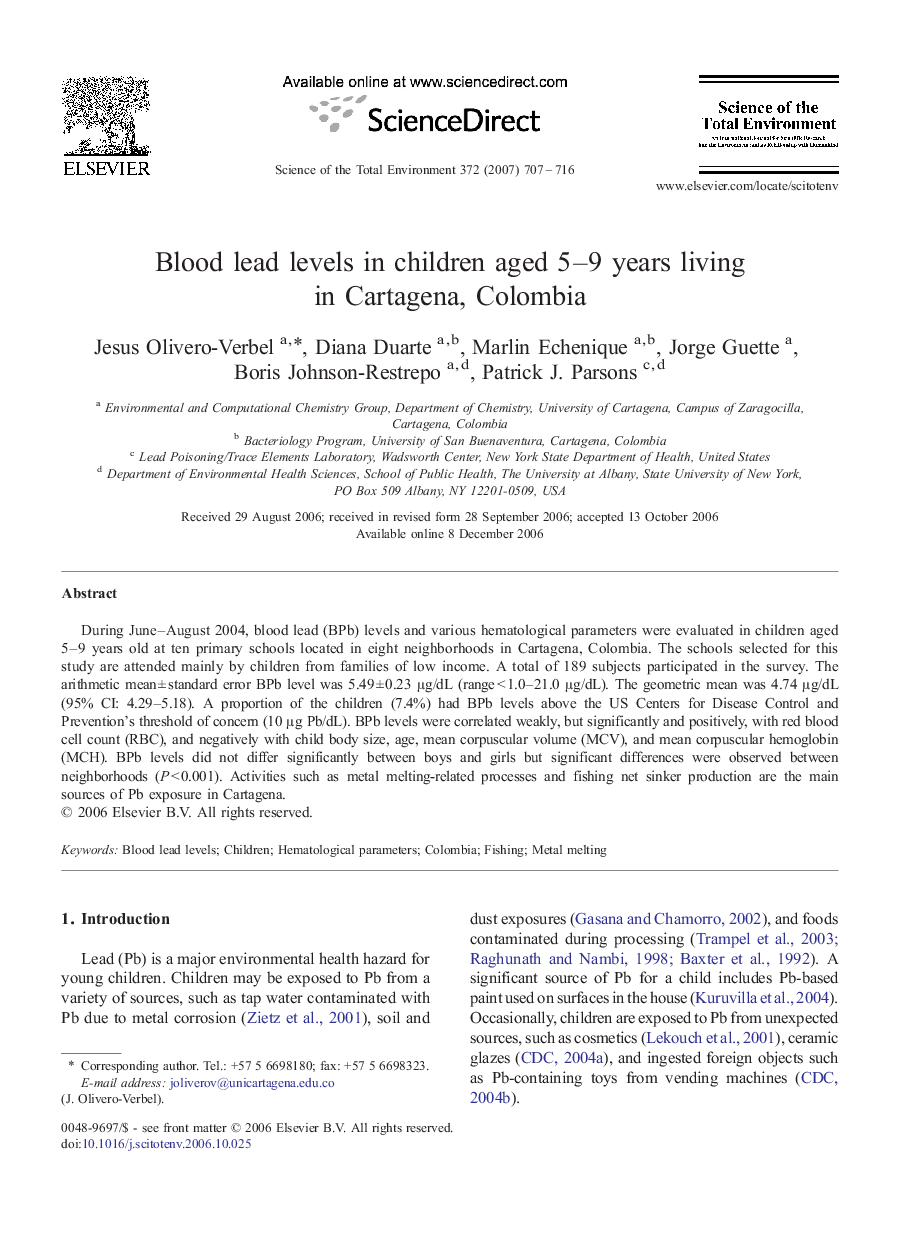| Article ID | Journal | Published Year | Pages | File Type |
|---|---|---|---|---|
| 4433584 | Science of The Total Environment | 2007 | 10 Pages |
Abstract
During June-August 2004, blood lead (BPb) levels and various hematological parameters were evaluated in children aged 5-9 years old at ten primary schools located in eight neighborhoods in Cartagena, Colombia. The schools selected for this study are attended mainly by children from families of low income. A total of 189 subjects participated in the survey. The arithmetic mean ± standard error BPb level was 5.49 ± 0.23 μg/dL (range < 1.0-21.0 μg/dL). The geometric mean was 4.74 μg/dL (95% CI: 4.29-5.18). A proportion of the children (7.4%) had BPb levels above the US Centers for Disease Control and Prevention's threshold of concern (10 μg Pb/dL). BPb levels were correlated weakly, but significantly and positively, with red blood cell count (RBC), and negatively with child body size, age, mean corpuscular volume (MCV), and mean corpuscular hemoglobin (MCH). BPb levels did not differ significantly between boys and girls but significant differences were observed between neighborhoods (P < 0.001). Activities such as metal melting-related processes and fishing net sinker production are the main sources of Pb exposure in Cartagena.
Related Topics
Life Sciences
Environmental Science
Environmental Chemistry
Authors
Jesus Olivero-Verbel, Diana Duarte, Marlin Echenique, Jorge Guette, Boris Johnson-Restrepo, Patrick J. Parsons,
